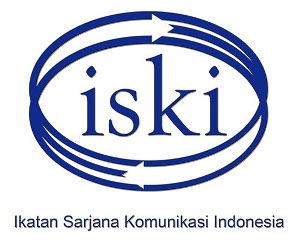CRITICAL DISCOURSE ANALYSIS OF FILM THE PEAKY BLINDERS
Abstract
Film as a communication medium is audio-visual which is used to deliver messages to audiences. This article aims to explain the linguistic space for discourse on social phenomena in post-war I and II through the audio-visual medium The Peaky Blinders film in relation to the emergence of discriminatory discourse on social status among the lower class people, namely ex-soldiers workers. The critical paradigm is used as a perspective in this article. The results that have been analyzed by the author are that social inequality has an impact, namely the existence of social hegemony and power takes place when the grassroots including the proletariat have accepted and imitated the way of life, way of thinking, and views of the elite group that dominates and exploits them and causes some discrimination, namely such as discrimination of a profession or position, discrimination of clothing, and discrimination of behavior or manners.
Keywords
Full Text:
PDFReferences
Creswell, John W. (1998). Qualitatif Inquiry and Research Design: Choosing among Five Traditions. Thousand Oaks: Sage
Chinn, C. (2021). Peaky Blinders: The Aftermath: The real story behind the next Eka Sastra. (2017). Kesenjangan Ekonomi, cetakan ke 1, Bandung : PT Mizan Publika.
Eriyanto. 2001. Analisis Wacana: Pengantar Analisis Teks Media. Yogyakarta: LKiS.
Fairclough, N. (2013). Critical discourse analysis: The critical study of language. Routledge.
Kriyantono, R. (2009-2010), Teknik Praktis Riset Komunikasi (disertai Contoh Praktis Riset Media Public Relations, Advertising, Komunikasi Organisasi, Komunikasi Pemasaran), Edisi ke-4, Kencana Prenada Media Group, Jakarta.
Mills, Sara. 2001. Discourse. New York & London: Routledge.
Moleong, Lexy J. (2017). Metode Penelitian Kualitatif, cetakan ke-36, Bandung : PT. Remaja Rosdakarya Offset.
Mulyana, Deddy. (2006). Metodologi penelitian kualitatif : paradigma baru ilmu komunikasi dan ilmu sosial lainnya / penulis:
Prasetya, A. B. (2019). Analisis Semiotika Film dan Komunikasi. Malang: Intrans Publishing.
Anggraeni, D. M., & Sukmono, F. G. (2019). Representasi Kelompok Minoritas Disabilitas Netra Dalam Film Dokumenter The Unseen Words. Jurnal Interaksi: Jurnal Ilmu Komunikasi, 3(2), 180–199. https://doi.org/10.30596/interaksi.v3i2.3355
Asri, R. (2020). Membaca Film Sebagai Sebuah Teks: Analisis Isi Film “Nanti Kita Cerita Tentang Hari Ini (NKCTHI).” Jurnal Al Azhar Indonesia Seri Ilmu Sosial, 1(2), 74. https://doi.org/10.36722/jaiss.v1i2.462
Ayustin, E., & Christin, M. (n.d.). Sara Mills Model Critical Discourse Analysis on the Peaky Blinders Serial. 26002–26010.
Bandura, A. (1977). Social Learning Theory. New York: General Learning Press.
Chinn, C. (2019). Peaky Blinders-The Real Story of Birmingham's most notorious gangs: The No. 1 Sunday Times Bestseller. Kings Road Publishing.
Diksa : Pendidikan Bahasa Dan Sastra Indonesia, 5(2), 77–85. https://doi.org/10.33369/diksa.v5i2.9914
Goncu, C. (2017). 13. Unikom_Selma Shabrina_Bab Ii. Physics Education, 23(4), 1–10.
Goziyah, G. (2019). Analisis Wacana Kritis Film Rudy Habibie dalam Meningkatkan Kemampuan Berpikir Kritis Mahasiswa.
Ismail, S. (2008). A w k : a m w. Jurnal Bahasa Unimed, 2. https://media.neliti.com/media/publications/74626-ID-analisis-wacana-kritis-alternatif-mengan.pdf
Habibie, D. K. (2018). Dwi Fungsi Media Massa. Interaksi: Jurnal Ilmu Komunikasi, 7(2), 79. https://doi.org/10.14710/interaksi.7.2.79-86.
Hamad, I. (2007). Lebih Dekat dengan Analisis Wacana. Mediator: Jurnal Komunikasi, 8(2), 325–344. https://doi.org/10.29313/mediator.v8i2.1252.
Muhardi. (2005). Kenaikan Harga Bahan Bakar Minyak (Bbm) Dan Implikasinya Terhadap Makro Ekonomi Indonesia. Lomba Karya Tulis Ilmiah (LKTI) Dosen UNISBA, XX1(4), 469–471.
Munfarida, E. (2014). Elya Munfarida. Komunika : Jurnal Dakwah Dan Komunikasi, 8(1), 1–19. http://www.ejournal.iainpurwokerto.ac.id/index.php/komunika/article/view/746
Notoatmodjo. (2013). Variabel Independen Dan Variabel Dependen. Journal of Chemical Information and Modeling, 53(9), 1689–1699.
Surahman, S., & Annisarizki. (2020). Konstruktif Nilai Berita Foto Jurnalistik pada Majalah Tempo Edisi 16-21 Juni 2020 "Panggung Politik Trah Jokowi" Social Semioic Approach. Specta Journal of Photograhy, Art, and Media, 4(2), 147-162.
Tretis, K., & Konseptual, K. (2007). Bab ii kerangka teoretis, kerangka konseptual, dan hipotesis penelitian. 9–32.
Wardhani, A. S. (2021). Analisis Wacana Kritis Film Parasite : Kesenjangan Sosial Dalam Budaya Modern. Program Studi DKV, ISI Yogyakarta, 1–15. http://digilib.isi.ac.id/id/eprint/9349
https://www.cnnindonesia.com/nasional/20221004185830-32-856340/dpr-anggarkan-rp15-m-beli-tv-led-43-untuk-ruang-kerja-anggota-dewan.
https://www.tigeraspect.co.uk/series/drama-films/peaky-blinders/
https://www.cnnindonesia.com/hiburan/20210120134543-220-596143/kreator-pastikan-kisah-peaky-blinders-berlanjut-ke-film.
https://theasc.com/articles/peaky-blinders-mean-streets
DOI: http://dx.doi.org/10.30813/s:jk.v17i1.4194
Refbacks
- There are currently no refbacks.
Copyright (c) 2023 Sigit Surahman, Manda Shinta Bella, Ignasius Liliek Senaharjanta, Rully Rully

This work is licensed under a Creative Commons Attribution-ShareAlike 4.0 International License.
Publisher
Editorial Board SEMIOTIKA: Jurnal Komunikasi
Department of Communication
Faculty of Social Science and Humanities
"UNIVERSITAS BUNDA MULIA"
Lodan Raya St No.2, North Jakarta 14430
Phone: +62 21 692 9090 ext. 348
Email: SEMIOTIKA@ubm.ac.id













